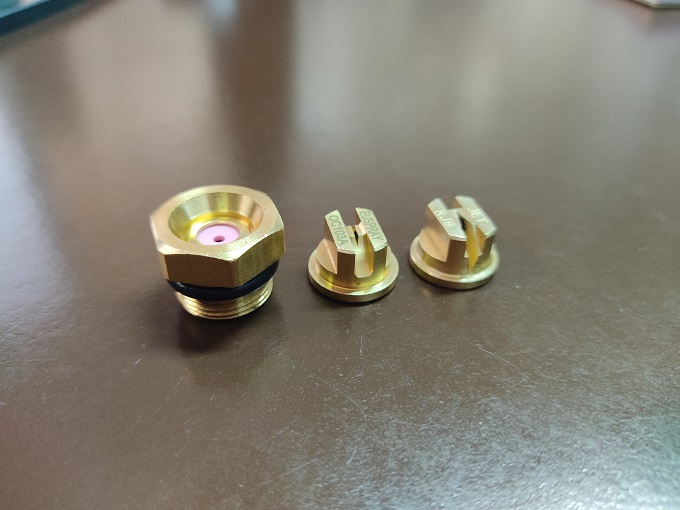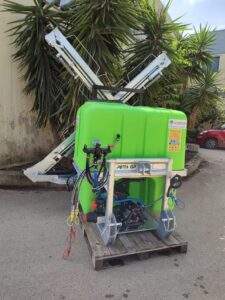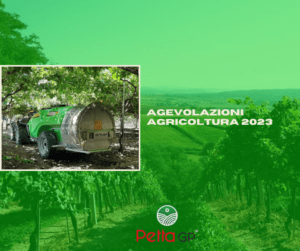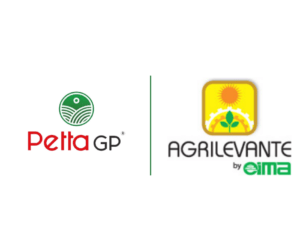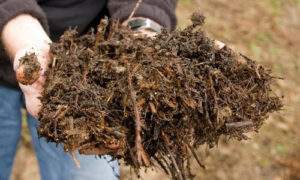Agricultural machines for spraying, whether they are atomizers or weeding groups, owe the success of the distribution of pesticides to a small, but vital, component: the nozzle.
The nozzle is the terminal on the machine that distributes the agrodrug and transforms the energy that the fluid possesses into kinetic energy. The nozzles, if well calibrated, allow to minimize drift, ie the phytosanitary solution that does not hit the target.
Well calibrate them, therefore, allow both to reduce economic expenses that potential risks to the environment and people.
What is the right nozzle for your agricultural machinery?
The nozzle, like every component in agricultural production, requires the right choice in order to obtain the desired result from the farmer.
Its function of creating drops of water/agrodrug solution comes from its mechanism of production of droplets to be distributed on plants in order to carry out treatment.
The choice of nozzle depends on the type of application that the farmer intends to make. In fact, for open field crops there are a wide variety of nozzles that can be used depending on the types of treatments:
- herbicides
- fungicides
- insecticides
For each of these categories there are additional variables that occur when contact treatments or systemic treatments are carried out.
This also applies to the choice of nozzles to be used on atomizers.
The nozzles on the market
There are different types of nozzles on the market, depending on the mechanism, but generally four macro categories are indicated:
- spray nozzles for pressure or hydraulic
- Diffusers with pneumatic pulverization
- rotary nozzles (centrifugal spraying)
- nebulizers or foggers (thermal spraying)
The hydraulic spray nozzletransforms the liquid into a spray by passing the solution through the spray tip. It is also divided into: threaded body, filter, spray tip and locking ring.
Its operation is simple: the higher the pressure, the lower the outlet orifice, the thinner the distributed drops will be.
On the market there are several categories of these nozzles:
- slit
- swirl
- mirror
- full-cone
The choice of these nozzles varies according to the type of crop, the amount of liters per hectare to be distributed, the speed of the tractor, the type of pressure and the type of treatment.
For the distribution of the product per hectare we will provide mathematical formulas, easy to understand, to better understand the choice of the right nozzle for your needs.
For the atomizers, please:
For the control of the atomizer liquid dispensing it is important to pay attention to:
Q = quantity of litre to be delivered per hectare (lt/ha)
V = tractor speed (km/h)
D = distance between rows in metres.
Through this data, we can derive with the mathematical formula the total flow (liters per minute) to be dispensed that we will indicate with the letter T. Example:
q= 500 lt/ha
v= 5 km/h
d= 3 mt
600 = fixed number
500 *5*3/600 = 12.5 (T)
Dividing the result (in the example 12.5 T) by the number of nozzles used you get the amount of water and product dispensed per minute for each individual nozzle.
For more details see the attached table (source Arag):
According to this formula, the choice of nozzle will depend on the working pressure chosen.
Herbicide groups also have a formula.
If we want to obtain the liters per hectare that the sprayer distributes at a certain pressure, at a certain speed, and with a certain type of nozzle we must use the following formula:
Litres per hectare (lt/ha) = 60000*lt/min (per nozzle) divided by kilometres per hour (km/h) and by distance (L) in centimetres, between nozzles.
Example:
60000 = fixed number
1,82= lt/m 4 bar AITTJ60 nozzle (anti-waterproofing TEEJET nozzle)
5 km/h= tractor speed
50 cm= L (distance between nozzles)
60000 *1,82/ 5*50= 436,80 lt/ha
If, on the other hand, we want to calculate the litres per minute of each nozzle, the mathematical formula to be used will be as follows:
Lt/ha*Km/h*L
_____________ = 500*5*50/60000= 2,08
60000
Measured data with height of the bar from the ground of 50 centimeters.
The pneumatic spraying diffusers is generated by the collision between the transmitted fluid and a high-speed air current produced by a fan. The higher the air speed, the finer the drops will be.
The rotary nozzles consist of a notched rotating disk that rotates thanks to a scooter while the liquid is conveyed at low pressure to the center of the disc. The serration of the disc contributes to the creation of drops. Fineness is derived from the speed of the disc: higher speed creates smaller drops.
In the burners, or foggers, the mixture is pulverized by the current of hot gases that are produced by the combustion of a small engine.
